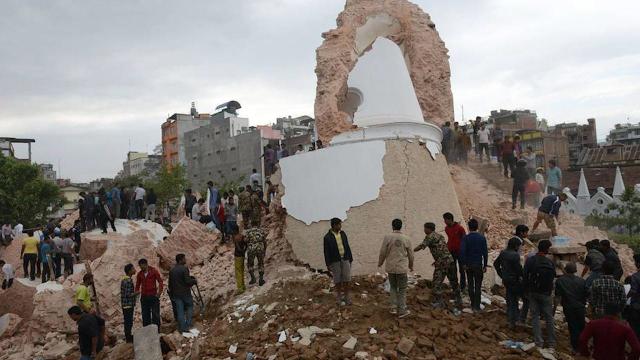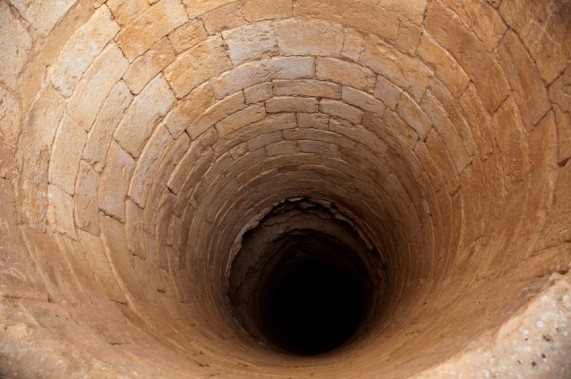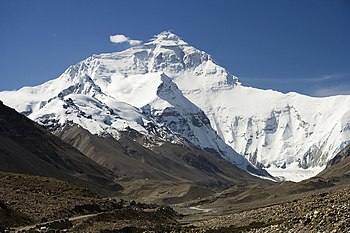(Christian Caryl at Foreign Policy called me up yesterday and asked me to write an article, which I did. This is Draft 1.)
Earthquake Tremors And Political Dysfunction In Nepal
by Paramendra Bhagat
April 29, 2015
Nepal hit the world headlines a few days back when a 7.9 earthquake hit the country with the epicenter 80 miles northwest of the overcrowded, unplanned urban sprawl that is the capital city
Kathmandu. This was an earthquake equivalent of the 2008 Great Recession hitting America. The last time an earthquake this big hit Nepal, a seismically active zone (the price you pay for having the world’s highest mountains), was about 80 years ago, but buildings and temples that survived that one did not manage to get past this one.
For the poorest country outside of Africa, among the most corrupt in the world, still struggling to write its constitution, the tragedy of the earthquake and its aftermath has further highlighted the utter political dysfunction in the country. There were no pictures of the political leadership making field visits, there were no words of empathy and consolation, instead the Deputy Prime Minister was heard spinning the whole thing on national television. Whatever help has poured in from other countries is very little, but there were reports even that was being sucked into the corrupt government machinery, and the ground level help was already along partisan lines. Political parties often too ready to get their cadres out into the streets for protests were not seen doing the same for relief work.
This earthquake is not only the worst disaster to have hit Nepal in my lifetime, it is the worst disaster to have hit the country during its entire existence of a few hundred years. There was already political dysfunction before the earthquake hit. But this earthquake has brought that political dysfunction to the forefront for the entire world to see. And it will play out over months, as most people who lost their homes will likely not have gotten a replacement when the monsoon rains hit in a few weeks. And the monsoon is unfailingly a natural disaster period every year like a clock. The monsoon is enough disaster on its own.
When the death tolls rang at 4,000, I guessed the number would easily go past 10,000. And if there are 10,000 dead, there must be at least 50,000 injured. The damage is past $20 billion, which is more than the GDP of the country. For days much of the news that poured in was from the capital city. Remote villages in the hills closer to the epicenter that had been completely wiped out stayed out of reach to the rest of Nepal and to the world. If you were not dead or injured, you were without food, water or medicine for days. Even then you were hoping your relative in Kathmandu will somehow make it to come help you.
Some foreign teams, like from Spain and Poland, came in for relief work, but instead picked up their people they had come to pick and left. But help poured in immediately. The Indian Prime Minister was the first to respond. Immediately there were planes flying in. Not long after 500 trucks were sent Nepal’s way. China gave out a statement that no, it is not competing with India in Nepal, it seeks to closely work with India. America, Israel, the UK, Japan and many others have stepped in. Tons of food, medicine and water got shipped in, not remotely enough. But it felt like band aid to where surgery was needed.
Political dysfunction hurts. Nepal has had democracy in fits and starts. For a country that has been the most popular destination among
Peace Corps volunteers in the entire existence of that program, and I am guessing the country’s rich cultural diversity has been a big reason for that, that diversity itself has become the prime sticking point as its political leaders have struggled to write a constitution for almost a decade now. Nepal has not had local elections for two decades. That uncertainty and vacuum magnifies the country’s corruption and weak infrastructure, physical, political and otherwise.
A few hundred years ago a Shah king physically unified the country by conquering other smaller kingdoms. At that time Nepal and America were at similar stages of socio-economic development. Never underestimate the power of a feudal institution to hold a country back. The
Rana family ruled for close to a hundred years after the Rana strongman Jung Bahadur took over and kept the king in a titular role. The country supplied soldiers in large numbers to the British in far flung wars like it supplies labor to Arab countries today. It is said Nepal lost more people in the two world wars than any other non warring country.
After the British left India, Nepal saw a brief experiment of democracy.
King Mahendra pulled a military coup, got rid of the nascent democracy, and brought about his direct rule. That lasted for three decades. When Bhutto was hanged in Pakistan, student protests erupted in Nepal asking for democracy. King Mahendra’s son dodged that by offering a referendum that was thoroughly rigged by his henchmen. When the Soviet Union collapsed, that led to a democracy movement in Nepal, and the 1990 movement was successful. But the king still stuck around, and regularly interfered. The Maoists of Nepal, shinier than the Shining Path of Peru, and at their peak commanding 80% of the country’s territory, spearheaded a civil war from 1996-2006. In 2001 the Crown Prince mowed down his entire family Columbine style and hit the world headlines. The country is still rife with conspiracy theories emanating from that tragedy.
In April 2006, one third of Nepal’s 30 million people came out into the streets for 19 days to depose a king, the slain king’s brother, who had pulled a military coup like his father Mahendra the year before. Nepal is now a republic. The king is now a citizen, a rich citizen, but citizen. He was seen in the streets a few days ago taking stock of the situation while the political leadership of the country was not.
Nepal got itself a jumbo constituent assembly of over 600 members, bigger than the Indian and American parliaments, in 2008 and again in 2012. In the first one the Maoists were dominant, in the second one they have been reduced to a minority. The leaders claim to have come to agreement on all issues except federalism. They just can’t seem to be able to agree on the boundaries and names for states.
I identify with the blacks in America because I grew up Indian in Nepal. The ethnic prejudice is very real and you can feel it in Queens. There are the Khas (Bahuns and Chhetris) who form the ruling elite in Nepal. Like Saddam’s Sunnis were 20% of Iraq but ruled the country, the Khas in Nepal are the same way. There are the Janajatis like the Sherpas of the Everest fame and the Rais, Limbus, Tamangs, Magars, and Gurungs who the Khas leaders over the centuries have sent to foreign wars to die in large numbers and are the Gurkha soldiers you might have heard of. There are Madhesis like me, people from the southern plains, who the British gifted to the rulers in Kathmandu in appreciation for the steady supply of the Janajati soldiers. These three groups are one third each. And 10-15% are Dalits, occupying the lowest rung in the
Hindu caste system. Half are women of course, and Nepal is a tremendously sexist country.
The Madhesi Movement of 2007 that shut the country down for weeks just like the April 2006 democracy movement produced more martyrs and had to be waged twice within a year to get the leader of the democracy movement Girija Koirala to add the word federalism and phrase “autonomous Madhes state” in the interim constitution.
So you are looking at a few hundred thousand people in the police, army, bureaucracy, political parties, media houses, human rights organizations and NGOs, representing maybe 10% of the population hellbent on denying the other 90% their due share in a country of 30 million. You knock four million people off the voters’ list, like a Nepali Prime Minister did a few years back. You engineer foul play during election time like the Nepal Army is supposed to have done in the 2012 election on behalf of the anti-federalists. To be fair, Maoist cadres also are supposed to have engaged in muscle games in the 2008 election.
Only a few weeks back Britain threatened to hold back all aid if Nepal did not mend its corrupt ways. Corruption is not news. But when help pouring in for earthquake victims gets thought of as just more foreign aid that the local powers that be can lay hands on, it hurts at many different levels. The suffering is very acute and real. There are hundreds of people in the rubbles who died because help never came, or came too late.
Like I said to a college friend of mine who reached out to me on Facebook after the news hit the “airwaves,” or the Facebook stream, it sucks to be a poor country and get hit by an earthquake this big.
A federal constitution that is fair to and is inclusive of the Khas, the Janajati, the Madhesi, the Dalit, the women, and regular free and fair elections at the local, state and national levels could help Nepal get past its current political dysfunction and on to more prosperous days. But that still might not happen in time for this earthquake’s victims. It is imperative that Nepal’s friends and well-wishers all over the world do whatever they can, from wherever they are, in whatever amount, in whatever capacity, so we can lessen the pain and suffering in the immediate term.
(Paramendra Bhagat www.paramendra.com, an early stage tech entrepreneur working on an Augmented Reality Mobile Game, “a super social network,” based in New York City, grew up in Nepal, in the 2005-06 period was the only full timer among the 200,000 Nepalis across the US to have worked for Nepal’s democracy movement. Later he was Barack Obama’s first full time volunteer in New York City.)



































